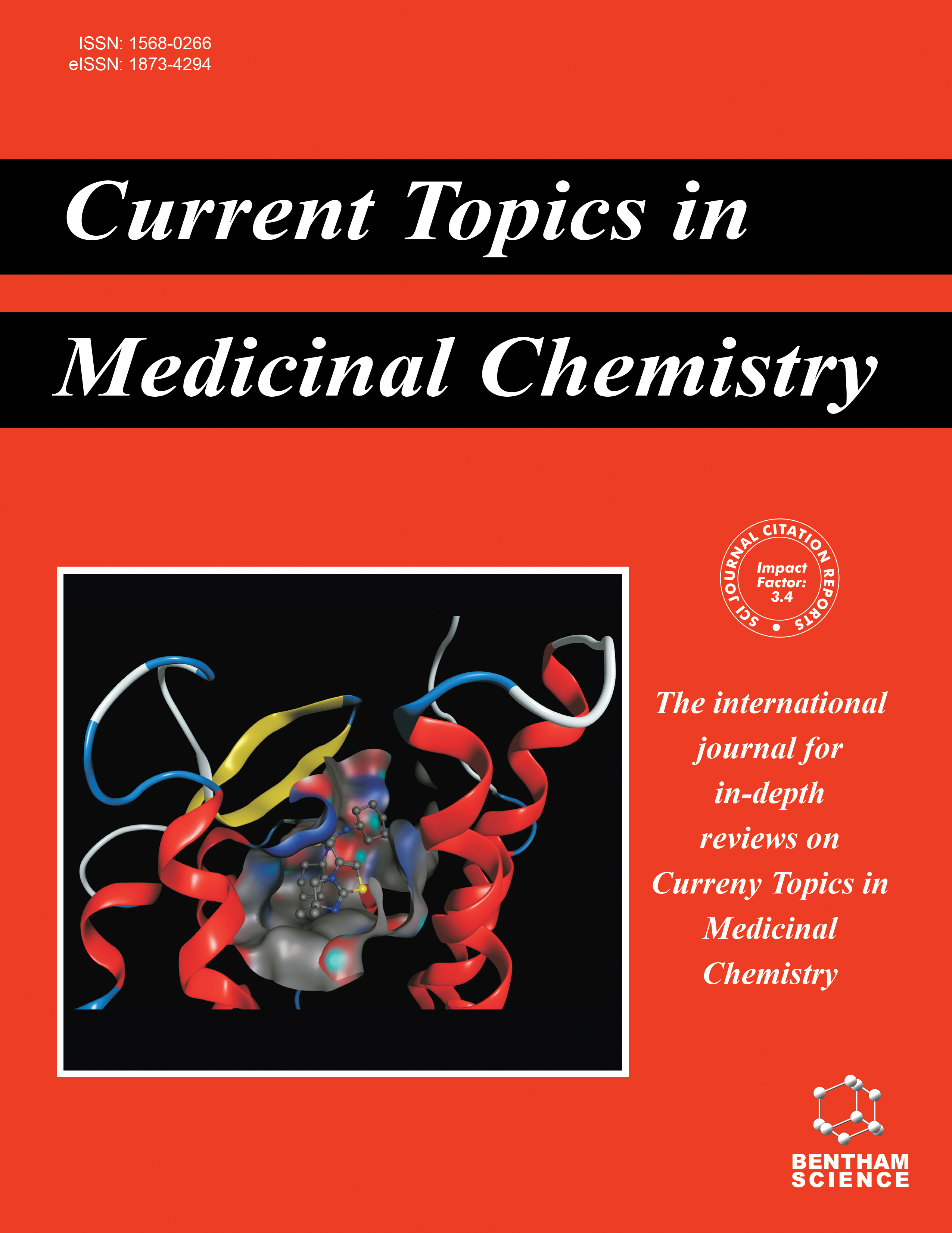- Home
- A-Z Publications
- Current Topics in Medicinal Chemistry
- Previous Issues
- Volume 3, Issue 10, 2003
Current Topics in Medicinal Chemistry - Volume 3, Issue 10, 2003
Volume 3, Issue 10, 2003
-
-
Use of Synthetic Isoprenoid Analogues for Understanding Protein Prenyltransferase Mechanism and Structure
More LessAuthors: T.A. Kale, S-a.J. Hsieh, M.W. Rose and M.D. DistefanoProtein prenylation involves the post-translational modification of specific protein-derived cysteine residues with farnesyl or geranylgeranyl groups through thioether linkages. Because a large number of proteins that participate in signal transduction processes require this modification, there has been intense interest in developing inhibitors of these enzymes and in clarifying the biological function of prenylation. Isoprenoid analog Read More
-
-
-
Inhibitors of Farnesyltransferase and Geranylgeranyltransferase-I for Antitumor Therapy: Substrate-Based Design, Conformational Constraint and Biological Activity
More LessAuthors: C.J. Dinsmore and I.M. BellThe development of farnesyltransferase inhibitors, a novel approach to non-cytotoxic anticancer therapy, has been an active area of research over the past decade. Compounds that have advanced to clinical trials were evolved both from substrate-based design efforts and from compound library screening hits. This review focuses on the effort at Merck to evolve inhibitors from the protein substrate of farnesyltransferase, w Read More
-
-
-
Farnesyl Protein Transferase Inhibitor ZARNESTRA™ R115777 - History of a Discovery
More LessAuthors: M. Venet, D. End and P. AngibaudR115777 (R)-6-amino[(4-chlorophenyl)(1-methyl-1H-imidazol-5-yl)methyl]-4-(3-chlorophenyl )-1- methyl-2(1H)-quinolinone is a potent and selective inhibitor of farnesyl protein transferase with significant antitumor effects in vivo subsequent to oral administration in mice. Taking its roots into Janssen's ketoconazole and retinoic acid catabolism programs, our interest into Ras prenylation process led us stepwise to identify the k Read More
-
-
-
Sch-66336 (Sarasar®) and Other Benzocycloheptapyridyl Farnesyl Protein Transferase Inhibitors: Discovery, Biology and Clinical Observations
More LessAuthors: A.G. Taveras, P. Kirschmeier and C.M. BaumFarnesyl Protein Transferase as a target for therapeutic intervention is currently under investigation in human clinical trials. Sch-66336 (sarasar®), a benzocycloheptapyridyl Farnesyl Transferase Inhibitor (FTI), has been found to be effective in cellular proliferation assays and in in vivo oncology models both as a single agent and in combination with other anti-cancer agents. Clinically, early evidence is being generated that sugge Read More
-
-
-
G-Protein Coupled Receptor Antagonists-1: Protease Activated Receptor-1 (PAR-1) Antagonists as Novel Cardiovascular Therapeutic Agents (Hot Topic: Structure and property Approaches in Recent Drug Discovery Guest Editor: Guo Zhu Zheng)
More LessInhibition of thrombin receptor (PAR-1) is a promising therapeutic approach for the treatment of various cardiovascular disorders such as unstable angina, acute myocardial infarction, stroke, and restenosis. Since a PAR- 1 antagonist is specific for the cellulalr actions of thrombin, and does not interfere with fibrin generation, it is expected to have less bleeding liability than the currently available treatments. Several peptide and Read More
-
-
-
The Role of Absorption, Distribution, Metabolism, Excretion and Toxicity in Drug Discovery
More LessAuthors: J. Lin, D.C. Sahakian, S.M. de Morais, J.J. Xu, R.J. Polzer and S.M. WinterMajor reasons preventing many early candidates reaching market are the inappropriate ADME (absorption, distribution, metabolism and excretion) properties and drug-induced toxicity. From a commercial perspective, it is desirable that poorly behaved compounds are removed early in the discovery phase rather than during the more costly drug development phases. As a consequence, over the past decade, ADME and toxi Read More
-
-
-
Structure-Activity Relationship Studies: M2 and CCR5 Receptor Antagonists
More LessAuthors: C.D. Boyle and A. PalaniA wide range of neurotransmitters, polypeptides and inflammatory mediators transduce their signals into the interior of cell by specific interactions with cell-surface receptors that are coupled to G-protein. The most familiar G-protein-coupled receptors are muscarinic receptors, adrenergic receptors, dopaminergic receptors and opioid receptors. A single polypeptide chain of 400-500 residues forms most of these receptors. Read More
-
-
-
Theoretical Property Predictions
More LessMethods for the prediction of octanol / water partition coefficient, aqueous solubility and acid / base dissociation constants are described and discussed. The advantages and limitations of the different approaches are described and an indication of problem areas discussed. Available prediction software is described and listed and attempts are made to assess the likely reliability of the predictions. The concept of “drug- Read More
-
Volumes & issues
-
Volume 25 (2025)
-
Volume 24 (2024)
-
Volume 23 (2023)
-
Volume 22 (2022)
-
Volume 21 (2021)
-
Volume 20 (2020)
-
Volume 19 (2019)
-
Volume 18 (2018)
-
Volume 17 (2017)
-
Volume 16 (2016)
-
Volume 15 (2015)
-
Volume 14 (2014)
-
Volume 13 (2013)
-
Volume 12 (2012)
-
Volume 11 (2011)
-
Volume 10 (2010)
-
Volume 9 (2009)
-
Volume 8 (2008)
-
Volume 7 (2007)
-
Volume 6 (2006)
-
Volume 5 (2005)
-
Volume 4 (2004)
-
Volume 3 (2003)
-
Volume 2 (2002)
-
Volume 1 (2001)
Most Read This Month
Article
content/journals/ctmc
Journal
10
5
false
en


